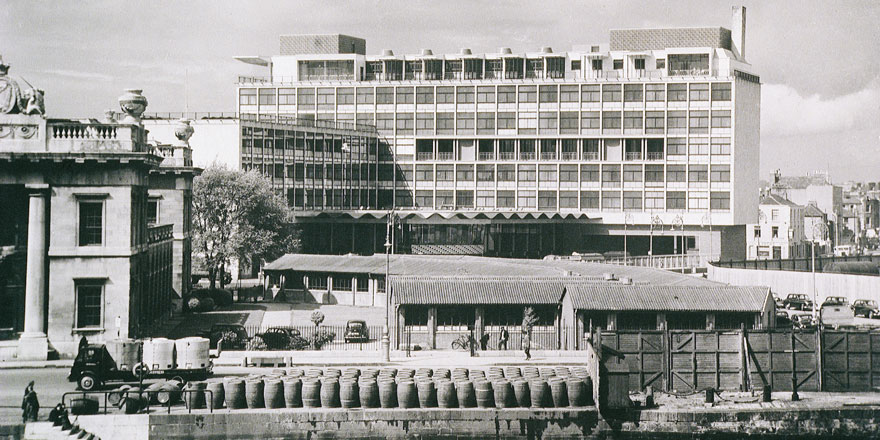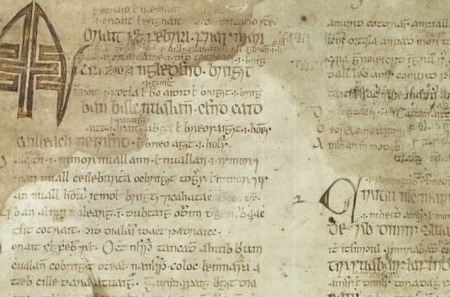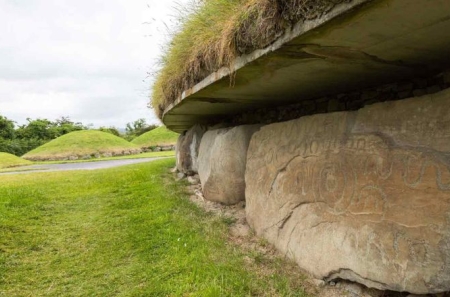
Modern Ireland in 100 Artworks: Busáras by Michael Scott
24 September 2015Busáras, 1948
Scott’s young, energetic design team combined with Ove Arup’s engineering brilliance in a masterpiece of modern architecture.
This week’s Modern Ireland in 100 Artworks entry is Michael Scott’s iconic design for Dublin’s Busáras station.
What do you think of the Modern Ireland in 100 Artworks series? Have your say @RIAdawson
In late 1948 a vast concrete carcass sat abandoned near Custom House in Dublin. This dramatic building site was to be the nation’s bus station – named Áras Mhic Dhiarmada but known as Busáras – a brave new Fianna Fáil project coming out of the 1940s amalgamation of various transport companies to form Córas Iompair Éireann.
Construction of this ambitious L-shaped structure had begun in 1946 but halted when a change of government in 1948 brought the interparty coalition to power.
The station was set to be exceptional: a large, predominantly glazed, flat-roofed reinforced-concrete building, sitting on an island site between the industrial eyesore of warehouses (today the IFSC) and the 18th-century splendour of Gandon’s Custom House. It had evolved from an initial two-storey circular design (1944) to the two rectilinear blocks (one eight-storey, one four-storey), hinged at a right angle and held in place by a double-height curved hall (1946).
It was to be pioneering for Ireland in terms of mechanical building services, double glazing, concrete technology and exotic materials. In many respects its construction signalled the most forceful statement of modernism in a post-Emergency Ireland. Here was modernist infrastructure coming into the centre of the capital, at the service of Ireland’s bus-travelling masses.
The station’s commission was mapped out between CIÉ’s chairman, AP Reynolds, who sought an image of speed and reliability for the transport body, and the man who was by then the most vocal force of Irish architectural modernism, Michael Scott (whose design for the Irish Pavilion at the New York World’s Fair is the 1939 entry in Modern Ireland in 100 Artworks). It was to be part of a series of Scott-designed technocratic CIÉ buildings of the 1940s, including Donnybrook bus garage and the Inchicore chassis factory. The building series brought to Dublin the British engineer Ove Arup. He was the likely source for Busáras’s signature wavy concrete canopy, carved out of 7.5cm concrete, cantilevered at 6m, and used to mediate between passenger concourse and open-air bus park.



